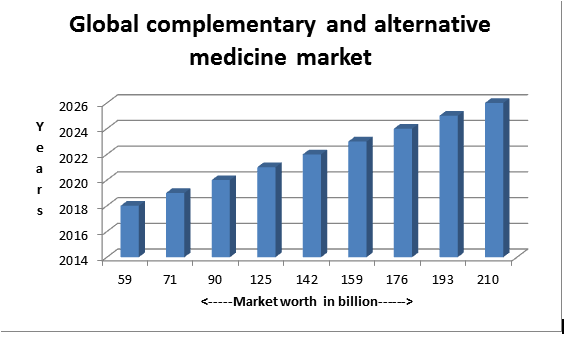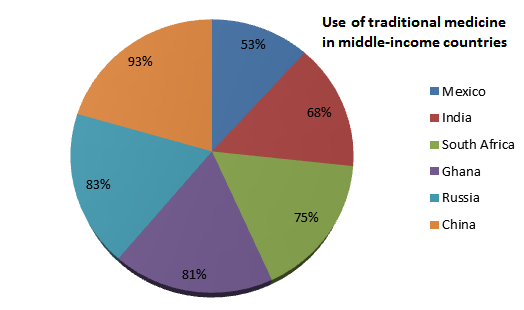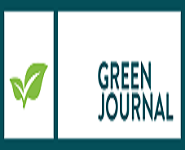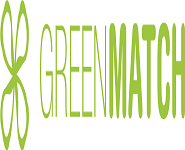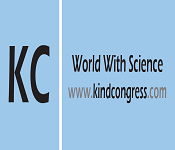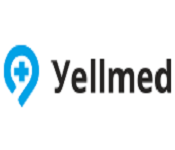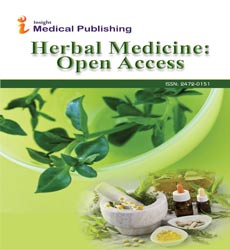
3rd World Congress on Traditional and Complementary Medicine going to be held in Dubai, UAE during December 10-11, 2020.
This conference dedicated to Traditional Medicine fraternity. This provides premier technical forum for learning and reporting about latest research and development, along with discussions on new applications and technologies.
This event includes presentations all over the world and professional networking with different industries and well leading working groups and panels.
Traditional Medicine Conferences 2020 | Alternative Medicine Congress | Top Traditional Medicine Conference | Herbal Medicine Conferences | Ethnomedicine Events
Theme: Exploring Innovations and Recent Advances Enhancing Excellence in Traditional & Complementary Medicine
Traditional Med Meet 2020
Dear Potential Researchers, Scientists, Industrialists & Students,
Join us for 3rd World Congress on Traditional and Complementary Medicine
Update your skills, enhance your knowledge base, and broaden your horizons- all in one place!
Date: December 10-11, 2020
If you are interested to be a part of this event as a speaker or delegate!
Email: lucywatson@memeetings.net
Call: 1-201-380-5561 (Extension No- 7005)
WhatsApp: +44 7723584505
Traditional Med Meet 2020 intention is to gather global leading educational scientists, researchers and research students, to exchange and share their experiences and research results about all the aspects of Traditional and Complementary Medicine
We invite all the Doctors, Acupuncturists, Natural Therapists, Traditional and Complementary medicine practitioners, Ayurveda and homeopathy practitioners, other researchers in the field of Herbal and Traditional Medicine, Pharmacognosy, Phytomedicine, Unani, Siddha, Holistic, people who believe in natural remedies to explore their research and share their knowledge, help with case studies and other practices of natural medicine at Traditional Medicine Conference 2020 in Dubai, UAE.
The conference proceedings include Keynote speeches, Exhibition, Plenary talks, Workshops, Symposiums, Poster sessions, B2B networking and Panel discussions on the latest research developments in the field of Traditional and Complementary Medicine.
Conference Series LLC Ltd. is the International conferences event organizer and Open Access Journal publisher. Conference Series Ltd currently has more than 700+ Open Access journals with 50,000 Editorial team and 3 million+ readers. Conference Series Ltd organizes 1000+ International scientific events for year across the world, where transfer of knowledge takes place through Oral Presentations, poster presentations, round table meetings, International symposiums, International workshops & world class exhibitions. Conference Series Ltd conferences host several presentations by eminent experts in the relevant fields.
Why to attend Traditional Medicine Conference 2020?
Click here to submit your speech abstracts realted to the sessions/ tracks given below:
1. Traditional Medicine Today: Clinical and Research Issues
Traditional Medicine is the oldest form of health care in the world and is used in the prevention, and treatment of physical and mental illnesses. Different societies historically developed various useful healing methods to contest a variety of health- and life-threatening diseases. Traditional Medicine is also variously known as alternative and complementary, or ethnic medicine, and it still plays an important role in many countries today, Traditional Medicine has eased in the development of modern drugs, Though its use of natural products, Traditional Medicine offers integrity over other forms of medicine in such areas as the following: detection of lead compounds and drug candidates, examining drug-like activity and scrutinize physicochemical, biochemical, pharmacokinetic, and toxicological characteristics. If any form of Traditional Medicine is applied successfully, it may surprisingly assist in the development of new drugs, thereby resulting in many benefits, such as significant cost reductions. Nations hardly have any policies or regulations relating to all of the aspects of traditional medicine as an integral part of their overall health care system. This results in an essential commitment to research and development funding.
2. Traditional Medicines and Disciplines
Traditional medicines are the Medicines with the sum total of the know-how, skills, and practices based at the theories, ideals, and stories indigenous to special cultures, whether explicable or no longer, used within the protection of fitness in addition to inside the prevention, analysis, development or treatment of bodily and intellectual contamination. Traditional Medicines disciplines include the nature of the plant from where the medicine is to be extracted, behaviour and its use and action on the body of human being. Traditional medicines firstly used by the lay people because they don’t have enough money to afford their treatment so they start exploring alternatives and they select shrubs, herbs , timers .
3. Phytochemistry and Traditional Medicines
Pharmacognosy is the study of medicinal drugs obtained from plants or other natural sources. Phytochemistry is the study of phytochemicals, where the chemicals are obtained from plants. Several metabolic mixes are found in plants. The medicinal plants investigated had been Aegle marmelos, Cynodon dactylon, Eclipta prostrate, Moringa pterygosperma, Pongamia pinnata, Sida acuta and Tridax procumbens. The importance of the vegetation in traditional medicine and the importance of the distribution of these chemical materials have been discussed with admire to the position of these vegetation in Ethnomedicine in all over the world. Roots had been utilized in India towards facial inflammation, rheumatism, jaundice and anaemia .The currently to be had technological advances and interdisciplinary research approach have sped up the isolation and characterisation of pharmacologically crucial molecules from herbal resources. The conventional folks medicines of India use medicinal plant based pills for preventing or suppressing various sickness.
4. Indigenous and Tribal Medicines
“A take a look at of the application of facts technology in tribal remedy in Kerala in regards to forest Medicinal Vegetation” Tribal medicine is part of conventional medicinal drug and is in particular practiced by the Tribal within the forest. It’s far still within the primitive shape. Consider about tribal remedy will be incomplete without the history of traditional medication since antiquity. Strategies and techniques of restoration, which in due direction of time crystallized into awesome structures of medical practices.
The usage of medicinal plant life as a fundamental aspect of the African traditional healthcare system is perhaps the oldest and the maximum assorted of all healing structures. In many parts of rural Africa, conventional healers prescribing medicinal flowers are the maximum effortlessly handy and cheap health aid to be had to the local community and at times the best therapy that subsists. Although, there is nevertheless a paucity of up to date comprehensive compilation of promising medicinal flowers from the African Continent. being African traditional medicine as oldest and perhaps its most assorted, of all therapeutic systems.
5. Unani Medicines
Unani medication, also called Unani tibb, Arabian medicinal drug, or Islamic remedy, a traditional machine of healing and fitness upkeep located in South Asia. The origins of Unani medicine are observed inside the doctrines of the historic Greek physicians Hippocrates and Galen. As a discipline, it turned into later evolved and refined through systematic test with the aid of the Arabs, most prominently by Muslim student-medical doctor Avicenna. For the duration of the Caliphate (the political-religious Muslim state that started out in 632 CE), the majority of Greek know-how turned into translated into Arabic, a part of that information being the principles of drugs. With extra contributions of medical understanding from other components of the Middle East and South Asia, Unani medication got here to be regarded additionally as Arabian, or Islamic, medicine.
The history of Unani medicine can be symbolized by way of the paintings of its practitioners, or hakims, who depended on herbal recovery based on concepts of concord and balance, uniting the bodily, mental, and non-secular geographical regions. The origin of Unani Medicines is From Arab countries and Unani is Urdu word.
6. Disciplines of Nursing in the field of Allopathy Homeopathy and Ayurveda
It is objective to improve the Medical and Paramedical Education in different systems of Medicines like Allopathy, Ayurveda, Homeo, and Sidha. It also intends to strengthen the research approach in these fields. Ayurvedic medicine is an hoary Indian form of healing. In this session, the principles and practices of Ayurvedic, Allopathic and Homeopathic medicine are outlined. In doing so, the safety of these medicines are explored in the context of evidence-based practice and the implications of these medicines for nursing will be discussed. It is concluded that an awareness of traditional, complementary and indigenous medicines may help nurses to be cognizant of its benefits and potential complications if it is used with conventional medicine.
The homeopathic drug treatments vary from others because of the methods they are prepared are very much different from others. Some homeopathic drugs are prepared the use of tissues or secretions containing bacteria, viruses, and different microorganisms. As a consequence, homeopathy encouraged the healing use of minuscule quantities of microorganisms long before the introduction of vaccines. Few commonly used homeopathic medicines organized in this manner include Tuberculinum, Syphillinum, and Variolinum. Homeopathic medicines are considered as very small drugs or in other words Nano drugs. The unique drug substance is used in extremely minute portions to put together a given homeopathic medication. Size of the pills of Homeopathy Medicines is round and is all most same for every disease. The method of applying or consuming homeopathy drugs is orally only. The word Ayurveda is derived from an Indian word, where Ayur means life and Veda means knowledge.
7. Drug Discovery From Natural Sources
Natural products are secondary metabolites that have been the most successful source for potential drug discovery. Natural products are well known for their medicinal uses. Plants that have evolved and adapted millions of years produces a variety of secretions and various agents in them to withstand bacteria, insects, fungi and weather, these secretions are secondary metabolites. Ethno pharmacological features have been used as a primary source of medicines for early drug discovery. The other aspect, Pharmacy is the science and technique of preparing and dispensing drugs. It is the health profession which connects health sciences with chemical sciences which ensure the safe and effective use of pharmaceutical drugs. Pharmacovigilance is the science and activities regarding the detection, assessment, expertise, and prevention of the destructive effects of drugs or every other possible drug-associated problems.
Under the WHO worldwide Drug tracking software, countrywide Pharmacovigilance facilities detailed by the capable fitness government are answerable for the gathering, processing, and assessment of case reviews of suspected detrimental reactions furnished by way of fitness care experts (mainly spontaneous reporting via physicians of reactions associated with the use of prescribed drug treatments). The program is defined in publications: protection monitoring of medicinal products: guidelines for setting up and going for walks a pharmacovigilance middle. Traditional medicine & Metabolites, Modern natural product-derived drugs, Foundations of organic and natural product chemistry, Biosynthesis, Drugs – Action and Behaviour, Antibiotics
8. Naturopathy
Naturopathic medicine is a distinct device of primary fitness care that emphasizes prevention and the self-recovery method via the usage of natural therapies. The ideas of Naturopathy were first used by the Hippocratic faculty of medication in about four hundred BC. The Greek logician Hippocrates believed in viewing the complete person in regards to finding a cause of disease, and using the legal guidelines of nature to induce therapy. It changed into from this original school of notion that Naturopathy takes its standards.
The recovery electricity of nature- nature has the innate ability to heal become aware of and treat the reason – there's always an underlying reason, be it physical or emotional. Do no harm- a Naturopath will in no way use remedies that could create different conditions deal with the entire person- while making ready a remedy plan, all factors of someone’s being are considered. The Naturopath as a trainer- a Naturopath empowers the patient to take duty for his/her own health by means of teaching self-care.
Prevention is better than treatment - a Naturopath can also do away with toxic substances and conditions from a patient’s way of life to save you the onset of similarly disease.
9. Acupuncture
Acupuncture is a system of remedy that consists of placing very skinny needles in to a person's body at specific factors at the body to restrained depths conventional Chinese medicine explains that health is the result of a harmonious stability of the complementary extremes of "yin" and "yang" of the existence force called "qi," stated "chi." contamination is stated to be the effect of an imbalance of the forces. Qi is stated to drift through meridians, or pathways, in the human frame. Those meridians and strength flows are handy through 350 acupuncture points within the body. In step with researches completed in Germany has shown that acupuncture may assist in get rid from anxiety headaches and migraines.
Acupuncture is the practice of needles insertion in subcutaneous skin, superficial skin and muscles at particular points. It is the form of alternative medicinal treatment with the usage of needles inserted into the body at specific points to relieve pain and stress management. This treatment is generally done by acupuncturist specialist and practitioners well trained on the particular subject using clean needles techniques, properly delivered, so that it has less adverse effects. This method is used to promote and restore the energy balance of the body. The benefits of acupuncture are extended to variety of conditions. It is beneficial for pain syndromes caused by an injury or chronic degenerative associated diseases as rheumatoid arthritis, Moxibustion, Tui Na Massage, Cupping/Scraping, Trigger Point Therapy, Auricular Acupuncture, Electro Therapy, Reflexology, Korean Hand Acupuncture and Veterinary Acupuncture
10. Chinese Traditional Medicines
Traditional and Complementary Medicine or Traditional Chinese Medicine, is the best way to create a life you genuinely want to live, the life you were born to live. It’s an endless bridge that can take up and support change and growth in any and every life dimension: physical, mental, emotional, and spiritual.
Traditional and Complementary Medicine has the Potential in determining your true potential and help you develop and use your own special gifts and your special factors. It’s discerning wisdom and ability to follow and abode individual health needs to allow each person with a way to unite body, mind, and spirit-the foundation for lasting, authentic health. Traditional and Complementary Medicine demonstrate you how to live a life of balance, wellness, and harmony. It’s true that Traditional and Complementary Medicine is one of the ancient healing systems on the planet. It has actually been in sustain practice for thousands of years. How can something from past work for people living today-in your life? Traditional and Complementary Medicine can be effectively applied to help heal anyone and any health issue no matter what year it is because it’s rooted in an unchanging natural way invisible levels and interacts with the surface or visible physical levels. It’s a medicine of extraordinary relationships. Every Traditional and Complementary Medicine process of work, treatment process, and healing practice reflects and silently with the relationships that exist within the natural process.
11. Yoga & Meditation
Yoga practice and meditation is a way of life that aims to remove obstacles and suffering from life to attain the highest spiritual goal ‘Samadhi’ or self-realization or union with higher consciousness. Yoga is not only about stretching and physical exercise. Yoga is practiced for everyday living in spiritual harmony. It is a holistic approach to healthy living. It helps to connect the mind, body, and spirit. It also improves daily living habits, helps to build better relations and in circulatory, respiratory, hormonal, digestive, excretory etc. It helps to achieve peace of mind, emotional and mental stability. Meditation doesn’t include any exercise or bodily movements. A person sits in a particular posture and concentrates on the significant object, sound, breathe to focus the energy within the body. It helps you gain your inner peace, and improves your stability, thought process and relieves stress.
12. Ethno Pharmacology
Ethnopharmacology is the study of different medicinal plants products in a specific group or in response to drugs by a different culture. It focuses on the use of traditional medicine in local communities and also commercial application. Many expensive drugs of today such as ephedrine, tubocurarine, atropine, reserpine, digoxin came into use through the study of indigenous remedies. Ethnopharmacology is based on the combination of the chemical, biological, and pharmacological sciences, which are a useful tool for natural product-based drug discovery. it deals with field studies, pharmacological and clinical studies of chemically profiled extracts, and studies on the quality and composition of several other issues like biological screening and naturally derived products research.
The Society will help to instruct the modern global knowledge on the herb, herbal remedies, herbal quality assurance, herbal trade and commerce, and herbal drug development so that the person with local knowledge can be upgraded. It will forge a bridge between the industry and academics to gather scientific and teaching professional in Ethnopharmacology and professional of other areas interested in developing cost-effective natural remedies.
13. Aspects of Complementary and Alternative Medicine (CAM)
Complementary medicine is the analysis used along with the standard medical treatments. Alternative medicine is the prescriptions used instead of standard medical treatments. In another way, complementary medicine is used when the therapies are used along with traditional Western medicine. Alternative medicine is used when this access is used instead of traditional medicine. Types of complementary health approaches are Cupping, Yoga, Tai Chi, Qi Gong, Chiropractic, Osteopathic Manipulation, Meditation, Massage, Special Diets, Progressive Relaxation, Crystal healing
Complementary Medicines can be determined as a group of diagnostic and therapeutic techniques or methods that are used together with conventional medicine. However, it is different from alternative medicine. The difference between complementary and alternative medicine is that Complementary Medicine is used together with conventional medicine whereas alternative medicine is used in place of conventional medicine. A subcommittee of IMCO has evolved a Complementary and Alternative Medicine guide which is widely accepted by pharmacists and physicians. A Complementary and Alternative Medicine guide is made available online to download and to the handheld device.
14. Holistic Medicine
In a current survey of Swedish GPs, the GPs positioned an emphasis at the session process as being an crucial tool for accomplishing an holistic view of sufferers and their issues. Inside the same survey, GPs discovered a holistic view both meaningful and found in their daily paintings.
Of be aware, they seemed to be training holistically however not necessarily labelling their practice a “Holistic Medicine” medicine is the art and science of healing the practice of holistic medicine extends conventional and alternative therapies to prevent and treat disease, and most importantly, to promote optimal health" holistic medicine treats symptoms but it also looks for underlying causes of these symptoms One way of explaining this is by looking for 'the story behind the story' ,An example of this has been exemplified in an Accident and Emergency setting where patients may present with one problem and then, they had relief from pain, diagnosis, and care, this meant to explain what led to their problems and attendance.
15. Integrative Health
Integrative medicine is the total approach to medical care which combines standard medicine with Complementary Alternative Medicine practices which are considered to be safe and effective. This treatment includes the patient's mind, body, and spirit. Integrative healthcare is an advent to medicine and comprehensive health that keeps the patient in the center of all care progress and opportunity. Integrative health combines different therapies as Alternative care, Western medicine, Eastern medicine and Complementary medicine to achieve all the best possible results Homeopathy, Acupuncture & Acupressure, Biofeedback, Chiropractic care, Reflexology
16. Internal or General Medicine
Internal Medicine targets on adult medicine to the exclusion particularly of surgical specialties, pediatrics, and psychiatry. There are many sub- specialists in internal medicine: cardiologists, gastroenterologist, pulmonologists, nephrologists, oncologists, endocrinologists, infectious disease specialists, intensivists (ICU) and endocrinologists.
The field of medicine is broadened, and doctors vary widely in their chosen areas of practice. Some specialize in an explicit type of disease or conditions of one part of the body or the care of one specific sub-population among patients. Others prefer to practice medicine in brightens, providing across-the-board primary care to a consistent group of patients over their career. general practitioners and Internists are the two common types of primary care physicians.
Internal medicine is also known as general medicine, is the medical specialty that involves treatment, diagnosis and prevention of diseases. Physicians that train in internal medicine are known as internists or simply physicians and they do a major part of their work in hospitals. They are highly proficient in managing patients with multi-system disease processes. Physicians not only take care of hospitalized and ambulatory patients but also play a big role in research and teaching, they also have a subspecialty in diseases that affect particular organ systems. Internal Medicine, we provide huge primary care in an outpatient setting while also providing care to hospitalized patients suffering from a wide range of diseases. Our healthcare team consists of Board Certified physicians of internal medicine, nurses, pediatrics and geriatrics etc
17. Medicinal Plant and Products
Medicinal Herbs are also called as Medicinal plants, Medicinal Herbs widely used in the Traditional Medicine and Medicinal Plants Products do not have any side effect on the human body.
Medicinal flowers or plants are used as traditional remedies for numerous human illnesses for thousands of years and in lots of components of the sector. In rural areas of the growing countries, they continue to be used as the primary source of medicine. The natural products derived from medicinal plants have proven to be a plentiful supply of biologically active compounds, a lot of that has been the premise for the development of latest lead chemical substances for prescription drugs. With appreciate to sicknesses caused by microorganisms, the increasing resistance in many common pathogens to currently used healing marketers. As there are almost 5,000,00 plant species going on global, of which best 1% has been phytochemically investigated, there may be super potential for discovering novel bioactive compounds. More than 75% countries are using Traditional Medicines As their Primary health care.
18. Medical Anthropology
Medical anthropology is a branch of anthropology, fixate on the relationship between health, illness, and culture. Acceptance and practices about health vary across different cultures and are influenced by social, religious, political, historical, and economic factors. Medical anthropologists are now designing multi-sited studies, for which they conduct ethnographic fieldwork in different field sites, use anthropological theories and methods to generate rare observation into how different cultural groups around the world experience, depict and respond to questions of health, illness, and wellness.
Medical anthropology succeeds more and more important after World War II when anthropologists began to empower the process of applying ethnographic methods and theories to investigate of health around the world. This was a time of widespread international development and humanitarian efforts aimed at bringing modern technologies and resources to countries in the global South. Anthropologists tested particularly useful for health-based initiatives, using their exclusive skills of cultural analysis to help develop programs tailored to local practices and belief systems. Specific campaigns focused on sanitation, infectious disease control, and nutrition
Medical anthropologists effort to solve a variety of complications. Illustration, some researchers focus on health equity and health disparities, trying to explain why certain communities have better or worse health outcomes than others, Medical anthropologists can be split into two general groups academic and applied. specializing in research, writing, and/or teaching. Uncontrite, applied medical anthropologists often work outside of university settings.
19. Evolvement of Complementary and Traditional Medicines
By rationale, ‘Traditional’ use of herbal medicines signify considerable historical use, this is surely true for many products that are available as ‘traditional herbal medicines’. In many developing countries. despite the fact modern medicine may exist oblique with such traditional practice, herbal medicines have regularly maintained their popularity for historical and cultural reasons. Many herbal treatments determined their way from China into the Japanese systems of conventional restoration. Herbs local to Japan have been labelled in the first pharmacopoeia of eastern conventional medicinal drug within the 9th century.
One of the maximum difficult problems to cope with in translating traditional herbal practices into conventional ‘western’ remedy is the individualization of prescriptions containing more than one natural and different elements there is little incentive for standardization of merchandise for a mass market, when the purpose has been to provide an character prescription To the small grower or the traditionally trained herbalist, standardization approach information the growth conditions, the time of harvesting, the manner of extraction or other coaching of cloth so that a reliable (albeit small amount of) energetic element can be presented to mankind.
20. Promising Future of Traditional Medicine
Animal and Mineral primarily based medicines, Non secular treatments, manual strategies and exercises, carried out singularly or in aggregate to deal with, diagnose and save you ailments or keep well-being. inside the ultimate decade conventional medicinal drug has come to be very famous in Cameroon, partly due to the long unsustainable economic scenario in the united states. The excessive fee of drugs and boom in drug resistance to common diseases like Malaria, Microorganism infections and different sexually transmitted sicknesses has prompted the healing method to alternative conventional medicine as an alternative for concerted search for new chemical entities (NCE).
Though traditional medicine has come into existence and practice it has some ethical issues which are to be considered for global health recognition. The use of traditional medicine has come into existence in the developing as well as the developed countries with the increased expression of safety, efficacy, quality, availability, preservation, and further development problems of these herbal products. It has become more popular in today’s world in the need for natural remedies.
Today, key research space include medical technologies, genetics and genomics, bioethics, disability studies, health tourism, gender-based violence, infectious disease outbreaks, substance abuse, and more. These might include comparative studies of health care in rural versus urban spaces in the same country, or combine traditional in-person fieldwork living in a particular place with digital research of social media communities.
The sector fitness employer (WHO) in collaboration with the Cameroon authorities has put in place a strategic platform for the practice and development of Traditional Medicine in Cameroon. This platform objective at harmonizing the conventional medication practice inside the U.S create a synergy among Traditional Medicine and current medicinal drug and to institutionalize a extra harmonized included Traditional Medicine practices by means of the year 2012 in Cameroon. A top level view of the exercise of Traditional Medicine past, present and destiny views that underpins the function in sustainable poverty relief has been mentioned.
This take a look at gives an insight into the strategic plan and avenue map installation through the authorities of Cameroon for the organisational framework and studies platform for the practice and improvement of Traditional Medicine, and the worldwide partnership concerning the control of Traditional Medicine in the USA.

Herbal Medicine is also known as Phytomedicine is a medicinal system in which the plant's materials such as the seeds, leaves, bark, oil, flowers, roots are used for the medicinal purpose. Herbalism is a long historical tradition in which nature and nature’s products are used to cure diseases. As per the estimation by WHO, almost 80 percent of the population of many African and Asian countries depend on traditional medicine for their healthcare and hospitality.
The release of the Current Good Manufacturing Practices for dietary supplements by FDA have led to the market drive for the world herbal medicine market and also with the growing population and increasing consumer awareness with little or no side effects. Another main reason for the increase in the market of traditional and herbal medicine is the increase in prices and tighter health budget of the modern medicinal system have driven the consumers to the more economical and safer herbal medicine system.
The market inhibition is due to the lack of standards and research in the traditional and complementary medicines with poor legal and regulatory framework which has caused patent problems. The poor manufacturing is also a drawback. Considering all these by the end of 2023 the market value for the herbal medicine is expected to reach $111 billion and is expected to grow at a CAGR of ~ 7.2% during 2017-2023.
Complementary & Alternative Medicine Market Worth $210.81 Billion By 2026
The global complementary and alternative medicine market size was valued at USD 59.76 billion in 2018 and is anticipated to expand at a CAGR of 17.07% during the forecast period. according to a new report by Grand View Research, Inc. global complementary and alternative medicine market size is expected to generate a revenue of USD 210.81 billion by 2026, circumstances such as the increasing adoption and usage of natural supplements/wellness medicine coupled with government initiatives to promote adoption of the therapy are expected to create revenue generation avenues.
Alternative and complementary medicine constitute the role of traditional methods of medication such as herbs and other mind and body healing techniques mostly based on faith and belief. Too many techniques used in alternative medical treatment are not approved by many regulatory bodies around the world. Copious governments and managerial bodies have put up efforts in finding clinical support for the incorporation into alternative treatments to help promote the market and treatment methods.
Most alternative therapies include long time medication and are mostly used for chronic pains and illnesses. A surge in the number of studios and outlets in the form of startups and well-established firms offering dietary herbal supplements and many other accessories needed for the therapies are used in the prescription of chronic ailments, long-term pain among others and are also used for additional vitamins and other dietary supplementing of the regular diet. as well with an appreciable increase in the costs of typical medicine and inclination towards body wellness rather than pharmaceutical cure is likely to boost the market over the forecast period.
Government efforts to reassure usage of the medicine is driving the complementary and alternative medicine market in several regions. After all, the lack of approved clinical support can hinder the growth as regulatory bodies from developed regions restrict the usage of these medicines and therapies. Comparatively the two-third population of most of the developed and developing countries has reported using one or the other form of alternative or complementary medicine. assured countries are moving towards legalization of some alternative medicine and therapies backed with approved clinical data.
Use of traditional medicine in middle-income countries:
It is moderately declared in the scientific literature, authoritative reports and the press that 80% of Asian and African populations use traditional medicine (Traditional Medicine) to meet their healthcare needs, withal, this statistic was first reported in 1983. This study aimed to update knowledge of the prevalence of Traditional Medicine use and the characteristics of those who access it, to inform health policy-makers as countries seek to fulfill the WHO Traditional Medicine scheme 2014–23 and harness Traditional Medicine for population health. Prevalence of reported use of Traditional Medicine was studied in 35,334 participants surveyed 2007–10. Traditional Medicine users were related with users of modern healthcare in univariate and multivariate analyses. components investigated included age, sex, geography (urban/rural), income quintile, education, self-reported health and presence of specific chronic conditions. This study found Traditional Medicine use was highest in India, 11.7% of people reported that their most frequent source of care during the previous 3 years was Traditional Medicine; 19.0% reported Traditional Medicine use in the previous 12 months. In contrast <3% reported Traditional Medicine as their most frequent source of care in China, Ghana, Mexico, Russia and South Africa; and <2% reported using Traditional Medicine in the previous year in Ghana, Mexico, Russia and South Africa. In univariate analyses, poorer, less educated and rural participants were more likely to be Traditional Medicine -users. In the China multivariate analysis, rurality, poor self-reported health and presence of arthritis were associated with Traditional Medicine use; whereas diagnosed diabetes, hypertension and cataracts were less prevalent in Traditional Medicine users. In Ghana and India, lower-income, depression and hypertension were associated with Traditional Medicine use. In conclusion, Traditional Medicine use is less frequent than commonly reported. It may be unnecessary, and perhaps futile, to seek to employ Traditional Medicine for population health needs when populations are increasingly using modern medicine.
Improvement Market Analysis:
The Traditional and Alternative medicine (TAM) market has been upgraded by increasing demand for natural alternative medicines. The constraint connected with conventional medicines is growing with the changes in lifestyle. Consumer approach of the health benefits of Traditional& Complementary Medicine is undergoing fundamental changes. The Traditional& Complementary Medicine industry has a boom in recent years. The potency of Traditional& Complementary Medicine in both health prevention and treatment has attracted investments from Western pharmaceutical companies as well as venture financiers. In China, Japan, Korea, Southeast Asia and the Asian societies in North America, the Traditional& Complementary Medicine market ranges from US$6 billion to US$20 billion depending on the source. With double-digit development in the past years and habitual over the next few years, and more and more studies on Traditional& Complementary Medicine appearing in first-class international magazines such as Nature, and the Journal of the American Medical Association, the World Health Organization (WHO) has projected that the global market for herbal products would be worth US$5 trillion by the year 2050.
Global Market Value of Plant Derived Drug
BCC research analyses Global market value for botanical and plant-derived drugs will grow from $29.4 billion in 2017 to around $39.6 billion by 2022 with a compound annual growth rate (CAGR) of 6.1% for the period of 2017-2022.
Global Market Value for Dietary supplements
Permitting to BCC research, global market growth rate for over the counter (OTC) drugs and dietary supplements reached $164.7 billion in 2016 and must reach $220.8 billion in 2021, with a compound annual growth rate (CAGR) of 6.0%.
The Traditional& Complementary Medicine 2020 knowledge is thought to be within everyone’s reach and does not require any study or training to practice it. In some families, almost all the members are enlightened with some part or other of herbal remedies. The traditional therapist pursues in particular areas of their profession. Thus, we find some medical specialist are professionals in bone setting, wound healing, neurological disorders, poisonous bites etc. and some others in inner healing, specifically the use of incantations while others combine both in their treatment. It is crucial to note that there is no doubt about the efficacy of herbal medicine among its users. Rural and urban poor people in India confide on herbal medicine since these are within their reach. In fact, in remote areas this is the only source of health care available.
Istanbul, The city held the strategic position between the Black Sea and the Mediterranean, As the only sea route between the oil-rich Black Sea and the Mediterranean, the Bosphorus is one of the busiest waterways in the world As expected for a city of its size, Istanbul has a diverse industrial economy, producing commodities as varied as olive oil, tobacco, vehicles, and electronics. Despite having a focus on high-value-added work, its low-value-added manufacturing sector is substantial, representing just 26 percent of Istanbul's GDP, but four-fifths of the city's total exports. In 2005, companies based in Istanbul produced exports worth $41.4 billion and received imports totaling $69.9 billion, these were equivalent to 57 percent and 60 percent, respectively, of the national totals.
Istanbul is home to Borsa Istanbul, the sole exchange entity of Turkey, which combined the former Istanbul Stock Exchange, the Istanbul Gold Exchange, and the Derivatives Exchange of Turkey. The former Istanbul Stock Exchange was originally established as the Ottoman Stock Exchange in 1866. During the 19th and early 20th centuries, Bankalar Caddesi (Banks Street) in Galata was the financial centre of the Ottoman Empire, where the Ottoman Stock Exchange was located. Istanbul was historically known as a cultural hub, but its cultural scene stagnated after the Turkish Republic shifted its focus toward Ankara. The new national government established programs that served to orient Turks toward musical traditions, especially those originating in Europe, but musical institutions and visits by foreign classical artists were primarily centered in the new capital. Much of Turkey's cultural scene had its roots in Istanbul, and by the 1980s and 1990s Istanbul reemerged globally as a city whose cultural significance is not solely based on its past glory. Istanbul has numerous shopping centres, from the historic to the modern. The Grand Bazaar, in operation since 1461, is among the world's oldest and largest covered markets
The first modern private university in Istanbul, also the oldest American school in existence in its original location outside the United States
Conference Highlights
- Traditional Medicine Today: Clinical and Research Issues
- Traditional Medicines and Disciplines
- Phytochemistry and Traditional Medicines
- Indigenous and Tribal Medicines
- Unani Medicines
- Disciplines of Nursing in the field of Allopathy Homeopathy and Ayurveda
- Drug Discovery From Natural Sources
- Naturopathy
- Acupuncture
- Chinese Traditional Medicines
- Yoga & Meditation
- Ethno Pharmacology
- Aspects of Complementary and Alternative Medicine (CAM)
- Holistic Medicine
- Integrative Health
- Internal or General Medicine
- Medicinal Plant and Products
- Medical Anthropology
- Promising Future of Traditional Medicine
- Evolvement of Complementary and Traditional Medicines
To share your views and research, please click here to register for the Conference.
To Collaborate Scientific Professionals around the World
| Conference Date | December 10-11, 2020 | ||
| Sponsors & Exhibitors |
|
||
| Speaker Opportunity Closed | |||
| Poster Opportunity Closed | Click Here to View | ||
Useful Links
Special Issues
All accepted abstracts will be published in respective Our International Journals.
- Journal of Traditional Medicine & Clinical Naturopathy
- Alternative & Integrative Medicine
- Herbal Medicine: Open Access
Abstracts will be provided with Digital Object Identifier by

